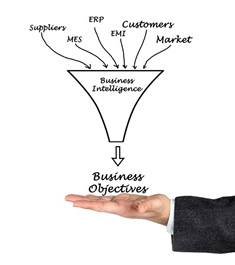 That’s one of the top big data management questions today.
That’s one of the top big data management questions today.
There’s no doubt that interest in Hadoop is rising. The top draw is the platform’s “ability to store and process semi-structured, unstructured, and variable data,” cited by 31% of the 374 respondents to the 2015 InformationWeek Analytics, Business Intelligence, and Information Management Survey involved with information management technology. Another 30% cited Hadoop’s ability to handle “massive volumes of data,” while 25% said it’s Hadoop’s “lower hardware and storage scaling costs” as compared to conventional relational database management systems. That’s the IT, data-management perspective on the need for Hadoop.
But why is the business looking to capture and analyze big data in the first place?
- The top driver, cited by 48% of respondents using or planning to deploy data analytics, BI, or statistical analysis software, is finding correlations across multiple, disparate data sources, like Internet clickstreams, geospatial data, and customer-transaction data.
- Next in line are predicting customer behavior, cited by 46%, and predicting product or service sales, cited by 40% of respondents (multiple responses allowed, see chart below).
- Other motivations include predicting fraud and financial risks, analyzing social network comments for customer sentiment, and identifying security risks.
In each of these examples, companies are searching for insight by analyzing big data sets that they couldn’t discover parsing the same old data they’ve long held in transactional systems alone. Capturing and analyzing clickstreams, server log files, social network streams, and geospatial data from mobile apps is a recent, big-data-era phenomenon for most organizations attempting it, and they’re gaining insights and seeing correlations that just weren’t available in the enterprise data warehouse.
So you’re considering Hadoop as a big data platform. You’ll probably need some new analytics and business intelligence tools if you’re going to wring fresh insights out of your data.
Take a deeper look at the survey. Decide what the takeaways are for your business. Then set your priorities in motion.
Our ETL Plus* and custom application development skills allow our analysts to mix and match data sets as needed. We can blend internal with external data sources to establish historical trends and project need and demand, which are the backbone of any feasibility study. Additionally, we can help you monitor trends, measure progress toward a quantitative goal or flag shifts in your market or business operations. Call us to start a conversation that can enhance your big data management investment while keeping your headcount down and ahead of your competition.